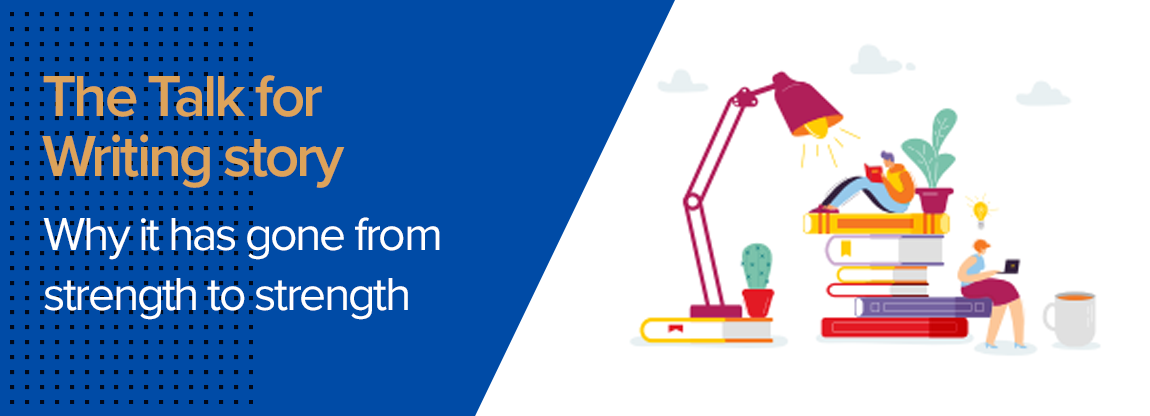Pupils are Engaged in Talking Through their Ideas before Applying their Ideas in Practice
Julia Strong and Pie Corbett share The Talk for Writing story and why it has gone from strength to strength over its first decade
Pie Corbett and I are great supporters of the Open University, so we were very happy way back in 2010 to start working with Open University Press. We were just about to set up Talk for Writing and were looking for ways of getting our ideas to a wide audience so publishing books, alongside a website (www.talk4writing.com), running training conferences and offering training was a good way forward.
Fast forward to 2020 and Talk for Writing has gone from strength to strength. We have over 33,000 members in our network, run around 25 conferences a year across the UK, have 13 trainers, plus 17 training schools so that teachers can see the approach in action, in addition to numerous requests to provide training all over the world. Moreover, the books have sold like hot cakes, in particular, Talk for Writing Across the Curriculum, which has sold over 50,000 copies.
2020 will long be remembered as the year Covid 19 struck the world. When the March lockdown closed the schools and halted our conferences, we decided to put our efforts initially into providing free units of work to support the schools, the teachers and, most of all, the pupils. 5 sets of 8 units were produced for children from reception to Year 8, resulting in many thousands of downloads and endless messages of thanks from pupils, parents, teachers and schools. Demand for training continued, despite the lockdown and our trainers quickly honed their online training skills. As the schools reopen for the new academic year, our training programme continues both in person and online.
What is Talk for Writing?
Talk for Writing is powerful because it is based on the principles of how people learn. The movement from imitation to innovation to independent application can be adapted to suit the needs of learners of any age and subject. A key feature is that pupils internalise the language structures needed to write through ‘talking the text’, as well as close reading. The term Talk for Writing not only describes all the talk that surrounds the teaching of writing but also the wider learning within a unit – for example, the text mapping process that helps students internalise the expression of a unit also helps the students remember the content of the unit or the practical application of skills. Pupils are engaged in talking through ideas before applying their ideas in practice, refining their spoken and written understanding alongside their understanding of what they are doing – their mental road map. By involving them in explaining to others, Talk for Writing enables the pupils to develop their understanding of whatever is being studied.
Does it work?
Quite reasonably, teachers often ask if it works. Since 2016, when the new SATs came into place, we have been analysing the data from our 16 primary training centres and comparing our standards with the national picture.
The graph shows that Talk for Writing schools, despite serving more challenging areas, attain at a significantly higher standard than the national average. The data demonstrates that since 2016, there has been an improving picture and the impact is not just in writing.
Our schools use the Talk for Writing process in all subjects. Children are taught the language structures they need to think and express themselves as mathematicians, scientists and historians. Some of our most deprived schools get maths results in the 90s.
The Open University Press books are an essential part of this success. For early years teachers there is Talk for Writing in the Early Years, for English teachers of KS1, KS2 and KS3 there is Talk for Writing Across the Curriculum, and for upper primary and secondary teachers of any subject there is Talk for Writing in Secondary Schools. These books are an essential support in our work because they allow teachers to reflect on the process and refine their practice. Every book is accompanied by hours of film clips and additional resources, which have moved from DVDs to a new companion website in 2020 to remain accessible in the constantly evolving publishing landscape.
Pie Corbett and Julia Strong
Sign up to our newsletter

